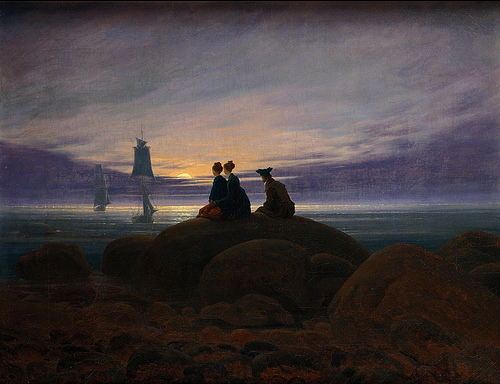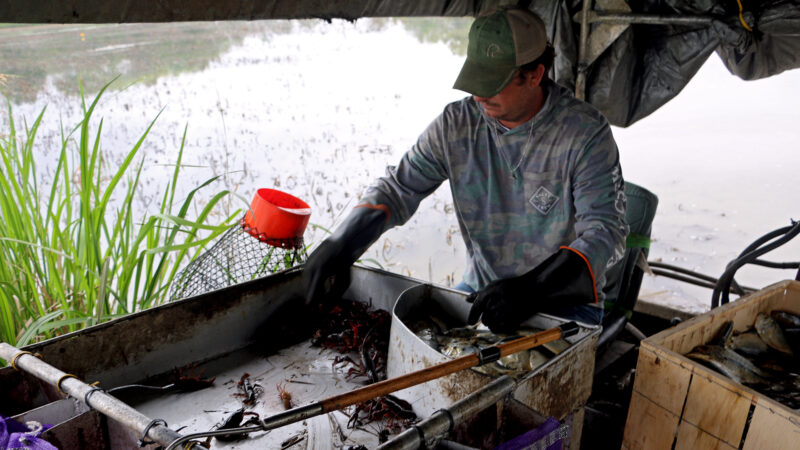Graham Boettcher’s Mission: Breaking Down the Ivory Tower
The Birmingham Museum of Art has a new director. Graham Boettcher’s appreciation for art started at a very early age. Growing up near Seattle, Washington, he frequently visited the city’s museums and acquired an affinity for Native American art of the Pacific Northwest. But when he got to Yale University as an undergrad, art wasn’t immediately on his radar. Boettcher was the first person in his family to graduate from college and he wanted to be a physician. But he quickly learned his passion for the sciences was overshadowed by his passion for the humanities.
“What I was passionate about are two things: I really loved history and I really loved art. So as an undergrad, I was a German Studies major, but with a formal concentration in art history because that was my third love was language. So I came to art history through German and northern European art history and then eventually transitioned to American, but with a sort of specialty an American artists born in Germany.”
On the changes in the art scene here in Birmingham since he arrived in 2006
“I would say the largest change that I’ve seen is that the art world is becoming increasingly large. It’s not an ocean with a single ship, but there are many ships of all different sizes from dinghies to two barges to aircraft carriers in terms of the size of the organization involved in the arts in this city. You know it’s nice. I think it’s nice that Birmingham has become a multi-museum town that it’s not, we’re not the only art museum in town. It’s a very vibrant and active art scene and becoming more so every day.”
On the role Birmingham Museum of Art plays in the city’s revitalization
“One of the things that we’re committed to is being a touchstone for all the individuals in the community that are seekers of art and beauty and culture. We want to be a place that people come and feel comfortable spending a great deal of time or just a little bit of time if that’s all they’ve got to spare. And that’s something that we’re constantly working at. I’d be lying if I said that we’ve just reached our pinnacle and we can just sit back and, you know, lean back in our chairs and rest on our laurels. We’re nowhere near there yet. I will feel like the Birmingham Museum of Art has fully communicated what it can be to the citizens of this city when everyone knows that we’re free, and when everyone in this community feels a sense of ownership for the museum because it is a public institution.”
On the biggest obstacles to gaining more community support for the museum
“One great obstacle we face is history. I understand why a large segment of our population views the museum or has viewed the museum as this inaccessible ivory tower because there was a time in Birmingham’s past when Jim Crow laws were in full effect that the Birmingham Museum of Art was only accessible to blacks on one day per week. So that’s one major thing that we’ve got to overcome is the fact that the museum was not accessible to everyone equally in the not so distant past. But then there of course is a generation that never knew that to be the case. And with the youngest generations who never experienced Jim Crow and have only heard about it secondhand through their parents or grandparents, the obstacle there is relevance. Why is this museum relevant in my life today in 2017? We want to make sure that every generation understands that what they see on the wall has context and resonance within the present day.”
On his favorite artist
“I have to admit that I have perhaps an unhealthy affinity you know, what’s the what’s the what’s the movie with Kathy Bates? Misery. “I’m your number one fan.” So I may be the number one fan of the German Romantic painter Caspar David Friedrich. And I lived in Dresden where he’s buried. And I actually used to go and clean his grave. I’ve been to where he was born in Greifswald, Germany. And I’ve been to see many of the places that he painted throughout Germany. And I’ve actually seen close to 90, just over 90 percent of his total body of work firsthand. So he’s an artist that I just love. He embodies the romantic spirit. And I just really feel moved every time I look at his work.”
Below is a work by Caspar David Friedrich titled Sunset by the Sea.

Photo by irinaraquel 
Alabama’s racial, ethnic health disparities are ‘more severe’ than other states, report says
Data from the Commonwealth Fund show that the quality of care people receive and their health outcomes worsened because of the COVID-19 pandemic.
What’s your favorite thing about Alabama?
That's the question we put to those at our recent News and Brews community pop-ups at Hop City and Saturn in Birmingham.
Q&A: A former New Orleans police chief says it’s time the U.S. changes its marijuana policy
Ronal Serpas is one of 32 law enforcement leaders who signed a letter sent to President Biden in support of moving marijuana to a Schedule III drug.
How food stamps could play a key role in fixing Jackson’s broken water system
JXN Water's affordability plan aims to raise much-needed revenue while offering discounts to customers in need, but it is currently tied up in court.
Alabama mine cited for federal safety violations since home explosion led to grandfather’s death, grandson’s injuries
Following a home explosion that killed one and critically injured another, residents want to know more about the mine under their community. So far, their questions have largely gone unanswered.
Crawfish prices are finally dropping, but farmers and fishers are still struggling
Last year’s devastating drought in Louisiana killed off large crops of crawfish, leading to a tough season for farmers, fishers and seafood lovers.







